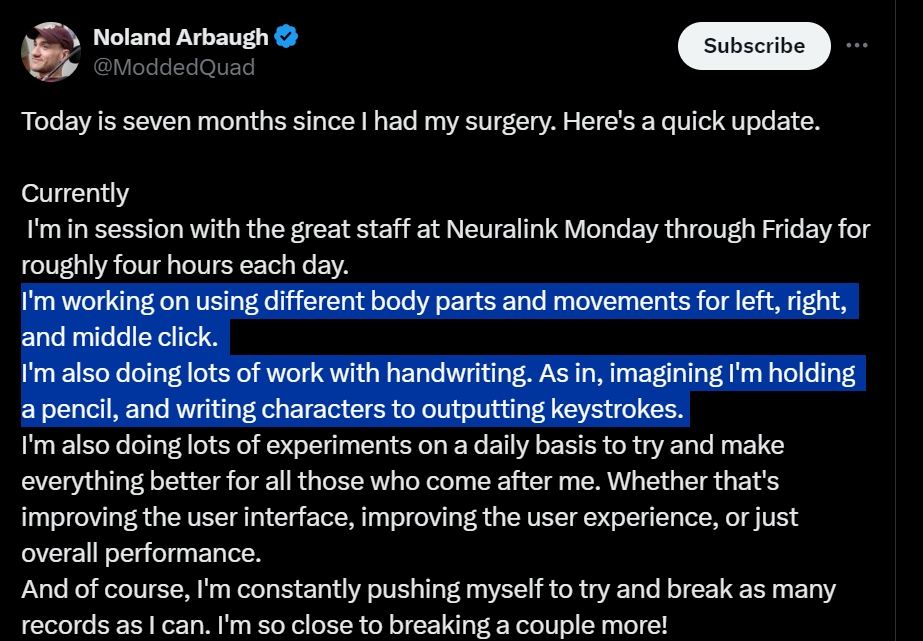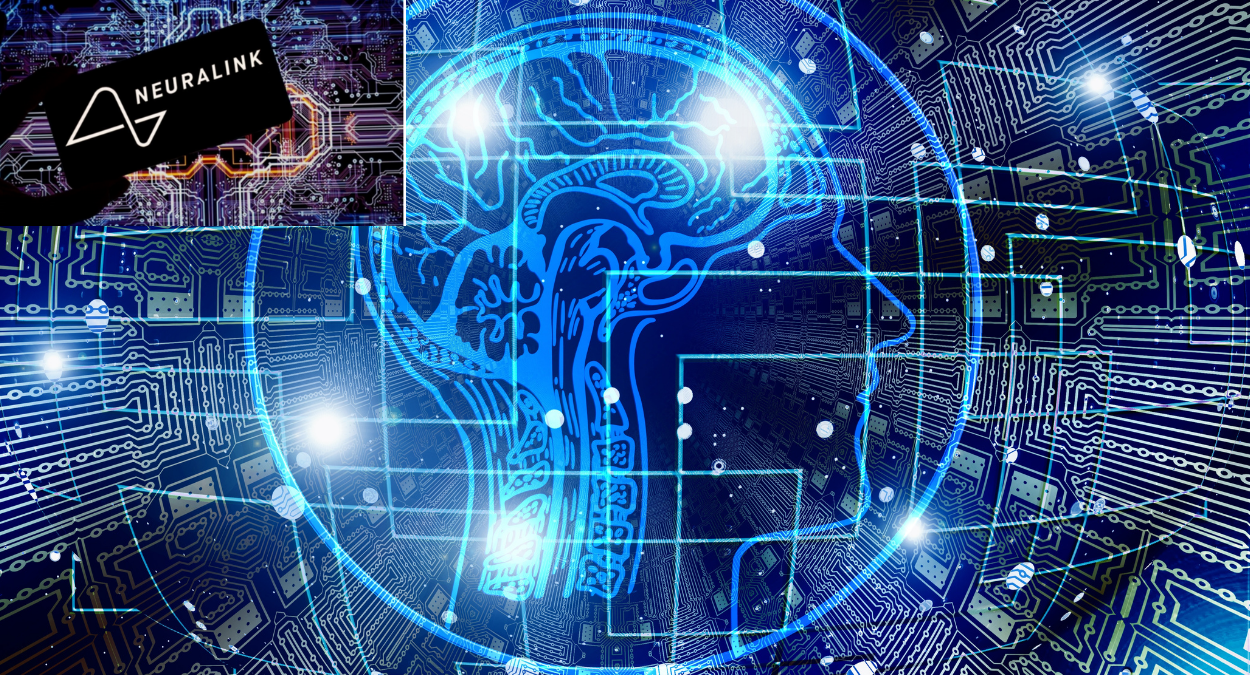It aims to connect brains with computers through an implantable chip connected to the brain by 64 neuro threads brain-computer interfaces.
Neuralink is a neurotechnology company founded by Elon Musk in 2016, focused on developing a brain-computer interface (BCI) that allows for direct communication between the human brain and computers. The primary goal is to help individuals with neurological disorders, such as paralysis, regain control over their movements and enhance cognitive functions which is the case with Noland Arbaugh (a quadriplegic), the first person implanted with Neuralink.
As Wikipedia says, Tetraplegia, also known as quadriplegia, is defined as the dysfunction or loss of motor and/or sensory function in the cervical area of the spinal cord.
Second Successful Implant:
Elon Musk recently announced that a second human has successfully received a Neuralink cybernetic implant. This achievement marks a significant milestone for the company.
During a podcast hosted by computer scientist Lex Fridman, Musk shared that the second implantation went extremely well. The device has a lot of electrodes and is processing signals effectively.
The First Neuralink Implant:
On 30th January, 2024 the tech genius posted on his “X” account that “The first human received an implant from @Neuralink yesterday and is recovering well. Initial results show promising neuron spike detection.”
The first human to receive a Neuralink implant was Noland Arbaugh, a quadriplegic. He underwent the procedure on 29th January 2024 as part of a clinical trial.
Arbaugh reported positive experiences with the device, including playing video games, chess, and surfing the Internet with ease. Before the surgery, he was still adjusting to life after a diving accident in 2016 that left him with a dislocated spine.
However, Arbaugh did encounter some issues during his Neuralink experience, including thread-related complications. Recently, Arbaugh has posted on his X account that this technology has drastically changed his life. He said, “I am in session with the great staff at Neuralink Monday through Friday for roughly four hours each day. I’m working on using different body parts and movements for left, right, and middle click. I’m also doing lots of work with handwriting. As in, imagining I’m holding a pencil, and writing characters to outputting keystrokes.” He said that he is learning French and Japanese for roughly three hours every day. He also hoped to go back to school and finish his studies with the help of this great device.

Future Steps for Neuralink:
Musk emphasized that the next steps for Neuralink are “gigantic.” The company plans to increase the number of electrodes dramatically and improve signal processing.
In summary, Neuralink’s progress is both exciting and promising. As the technology evolves, it could have profound implications for individuals with spinal cord injuries and other neurological disorders.
How Neuralink Functions
Implantation of the Device:
Neuralink’s device, known as the Link, is a small chip that is surgically implanted beneath the skull. It features thin, flexible threads equipped with 1,024 electrodes that can record the activity of neurons, the cells responsible for transmitting signals in the brain.
Recording Neural Activity:
The electrodes detect electrical signals produced by neurons. These signals are then converted into a binary code that can be processed by computers. This process allows the device to interpret the brain’s activity and translate it into actionable commands.
Wireless Communication:
The recorded neural signals are transmitted wirelessly to a Neuralink application, which decodes the data stream into specific actions or intents. This enables users to control devices, such as computers or prosthetic limbs, using only their thoughts.
Real-Time Processing:
Neuralink aims to achieve high data compression rates to facilitate real-time processing of the vast amounts of data generated by neural activity. This is crucial for the effective functioning of the device, as it needs to operate under low power while maintaining accuracy.
Potential Applications:
The technology has the potential to restore motor functions, enhance memory and cognitive abilities, and treat various neurological disorders. For instance, individuals with paralysis could control prosthetic limbs or communicate more effectively.
Current Developments
Neuralink has recently begun human trials, marking a significant milestone in its development. The first human implant was successfully performed, and the patient is reportedly recovering well. The company continues to explore the broader implications of its technology, aiming to revolutionize how humans interact with machines and potentially enhance human capabilities.
In summary, Neuralink represents a groundbreaking advancement in the field of brain-computer interfaces, with the potential to significantly improve the quality of life for individuals with disabilities and expand human cognitive abilities. This technological breakthrough has proved that Elon Musk is definitely a genius. What people think of him is that he is no less than any greatest scientists of their time.
